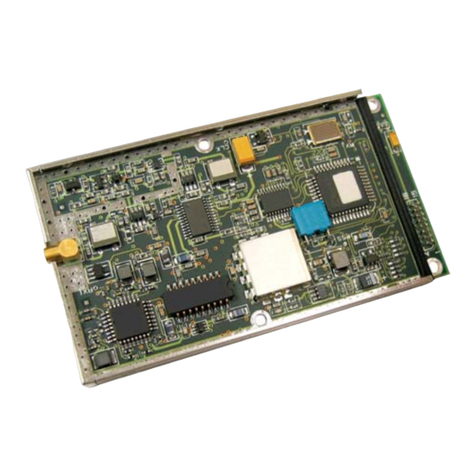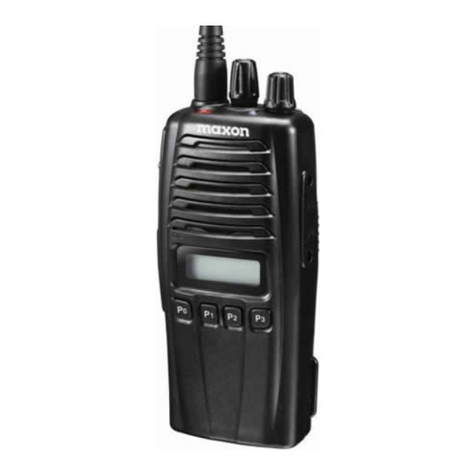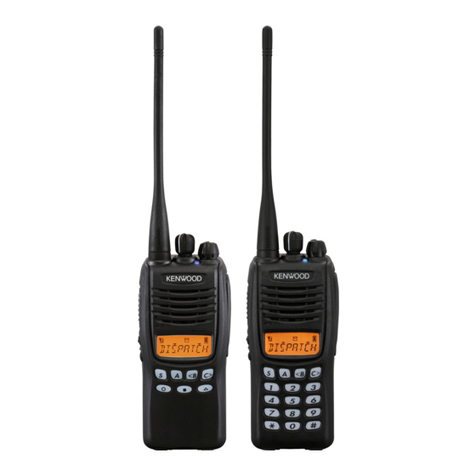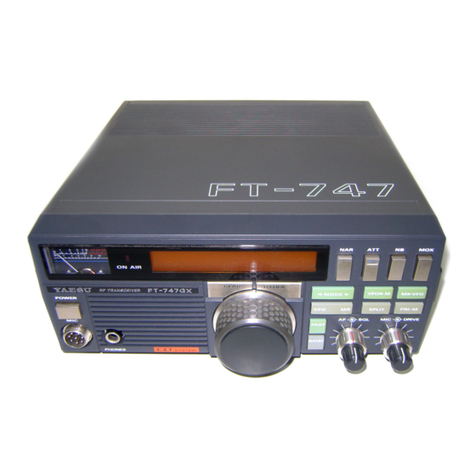General Lee 11181704 User manual

Printed In Vietnam
A41230889V

TABLE OF CONTENTS
CHAPTER 1
PAGE
CHAPTER 1 SPECIFICATIONS
GENERAL
Specifications
2
Frequency Range
RX/TX
:
28.015
-
28.585 MHz
Emission
AM/FM
Frequency Control
Phase-Lock-Loop Synthesizer
CHAPTER
2
Frequency Stability
001%
Installation
3
Temperature Range
-30
0
C to +50
C
C
Input Voltage
13.8V DC
Location
3
Antenna Impedance
50 Ohms
Size
7 7/8" (\V) x 9 1/4" (D) x 2 3/8" (H)
Mounting The Radio
3
Weight
5.0
lb.
Ignition Noise Interference
4
TRANSMITTER
Antenna
4
AM/FM RF Power Output
H: 12W; L: 3W
Spurious Emission
Better than
-50
dB
External Speaker
5
Audio Distortion
10%
Frequency Response
300 to 2500 Hz
Public Address
5
Microphone
Dynamic
CHAPTER 3
RECEIVER
Sensitivity for 10 dB S+N/N
AM:
<
1 uV
Operation
6
Sensitivity for 20 dB S+N/N
FM:
<
1 uV
Squelch Sensitivity
Less than 0.5 uV
Front Panel
6
Audio Power Output
2W
@
10% Distortion
Image Rejection Ratio
>50
dB
Rear Panel
8
AGC Figure of Merit
50 mV for 10 dB Change in Audio Output
Procedure to Receive and Transmit
9
Audio Response
300 to 2500 Hz
Microphone Installation And Substitutes
10
(SPECIFICATIONS SUBJECT TO CHANGE WITHOUT NOTICE)

CHAPTER 2 INSTALLATION
LOCATION
Plan the location of the transceiver and microphone bracket before
starting the installation. Select a location that is convenient for
operation and does not interfere with the driver or passengers. In
automobiles, the transceiver is usually mounted below the dash
panel with the microphone bracket beside it.
MOUNTING THE RADIO
The transceiver is supplied with a universal mounting bracket. When
mounting the bracket and radio to your car, make sure it is mechanically
strong. Also provide a good electrical grounding connection to the chassis
of the vehicle. Proceed as follows to mount the transceiver:
1.
After you have determined the most convenient location in your
vehicle, hold the transceiver with mounting bracket in the exact
location desired. If nothing will interfere with mounting it in the
desired position, remove the mounting bolts. Before drilling the holes,
make sure nothing will interfere with the installation of the mounting
bolts.
2.
Connect the antenna cable plug to the standard antenna receptacle on
the rear panel. Most transceiver antennas are terminated with a type
PL-259 plug and mate with the ANT receptacle.
3.
Connect the red DC power input wire (with the fuse) to +13.8V DC.
This wire extends from the rear panel. In automobile installation,
+13.8V DC is usually obtained from the accessory contact on the
ignition switch. This prevents the set being left on accidentally when
the driver leaves the car and also permits operating the unit without
the engine running. Locate the accessory contact on most ignition
switches by tracing the power wire from the AM broadcast receiver in
the car.
4.
Connect the black lead to —13.8V DC. This is usually the chassis of
the car. Any convenient location with good electrical contact (remove
paint) may be used.
5.
Mount the microphone bracket on the right side of the transceiver or
near the transceiver, using two screws supplied. When mounting in an
automobile, place the bracket under the dash so the microphone is
readily accessible.
IGNITION NOISE INTERFERENCE
Use of a mobile receiver at low signal levels is normally limited by the
presence of electrical noise. The primary source of noise in automobile
installations is from the generator and ignition system in the vehicle. Under
most operating conditions, when signal level is adequate, the background
noise does not present a serious problem. Also, when extremely low level
signals are being received, the transceiver may be operated with vehicle
engine turned off. The unit requires very little current and therefore will not
significantly discharge the vehicle battery.
Even though the transceiver has ANL and NB controls, in same installations
ignition interference may be high enough to make good communications
impossible. The electrical noise may come from several sources. Many
possibilities exist and variations between vehicles require different solutions
to reduce the noise.
ANTENNA
A vertically polarized, quarter-wavelength whip antenna provides the most
reliable operation and greatest range. Shorter, loaded-type whip antennas are
more attractive, compact and adequate for applications where the maximum
possible distance is not required. Also, the loaded whips do not present the
problems of height imposed by a full quarter-wavelength whip.
Mobile whip antennas utilize the metal body of the vehicle as a
ground plane. When mounted at a corner of the vehicle they are
slightly directional, in the direction of the body of the vehicle. For all
practical purposes, however, the radiation pattern is non directional.
The slight directional characteristic will be observed only at extreme
distances.

A standard antenna connector (type S0239) is provided on the transceiver
for easy connection to a standard PL-259 cable termination. If the
transceiver is not mounted on a metal surface, it is necessary to run a
separate ground wire from the unit to a good metal electrical ground in the
vehicle. When installed in a boat, the transceiver will not operate at
maximum efficiency without a ground plate, unless the vessel has a steel
hull. Before installing the transceiver in a boat, consult your dealer for
information regarding an adequate grounding system and prevention of
electrolysis between fittings in the hull and water.
EXTERNAL SPEAKER
The external speaker jack (EXT. SP) on the rear panel is used for remote
receiver monitoring. The external speaker should have 8 ohms impedance
and be able to handle at least 4 watts. When the external speaker is plugged
in, the internal speaker is disconnected.
PUBLIC ADDRESS
To use the transceiver as a public address system, connect an external 8
Ohms speaker (4 watts minimum) to the PA SP jack located on the rear
panel. Direct speaker away from the microphone to prevent acoustic
feedback. Physical separation or isolation of the microphone and speaker is
important when operating the PA at high output levels.
CHAPTER 3 OPERATION
FRONT PANEL
1.
MICROPHONE JACK:
This jack accept 4 pin microphone.
2.
€
N/OFF VOLUME CONTROL:
Turn clockwise to apply power to radio
and to set the desired listening level.
3.
SQUELCH CONTROL:
This control is used to eliminate background noise
being hear: through the receiver which can be disturbing when no
transmissions are being received. To use this feature of your radio, gently turn
the switch counterclockwise until the switch will not turn further. Then turn the
switch clockwise until the background noise is just eliminated. If you turn the
s itLh too far in a clockwise direction, you may not be able to hear weak
transmissions.
4.
MIC GAIN CONTROL:
Adjusts the microphone gain in transmit and PA
modes. This controls the gain to the extent that full talk power is available
several inches away from the microphone. In the Public Address (PA) mode,
the control functions as the volume control.
5. RF GAIN CONTROL:
This control is used to reduce the gain of the RF
amplifier under strong signal conditions.

C
0
0
/
(00 0
/
1.
ANTENNA:
This jack accepts 50 ohms coaxial cable with a PL-259 type
plug.
2.
POWER
: This accepts 13.8V DC power cable with built-in fuse. The
power cord provided with the radio has a black and red wire. The black
goes to negative and the red goes to positive.
3.
F.C.
: This connector is used for external frequency counter which
indicates the frequency of selected channel.
4.
PA. SP.
: Used to connect a PA speaker (8 ohm 4W) for PA operation.
Before operating PA you must first connect a PA speaker to this jack.
5.
EXT SP.
: This jack accepts 4 to 8 ohms,
5
watts external speaker. When
external speaker is connected to this jack, the built-in speaker will be
disabled.
REAR PANEL
6.
MODE CONTROL
: This control allows you to select one of the following
operating modes: PA/FM/AM.
7.
BAND SELECTOR:
This switch is used to select the band of operation (A -
F).
8.
ECHO CONTROL:
This control is used for echo effect.
9.
TONE CONTROL
: This control is used to control the intervals of the echo
sound.
10.
CHANNEL SELECTOR:
This control is used to select a desired transmit and
receive channel.
11.
FRONT PANEL METER:
The Front Panel Meter allows the user to monitor
signal strength and RF output power.
12.NBIANLIOFF
SWITCH:
When the switch is placed in the NB/ANL position,
the Automatic Noise Limiter is in the audio circuits and the RF Noise Blanker
is also activated. The RF Noise Blanker is very effective in eliminating
repetitive impulse noise such as ignition interference.
13.RF PWR HL'LOW SWITCH
: This switch is used to select transmitting
power. In the H position, the transceiver operates in 12 watts RF output power.
In the L position, the transceiver operates in 3 watts RF output power.
14.TALKBACKIOFF SWITCH
: This switch is used to monitor the sound
feedback effects.
15. DIMMER SWITCH
: This switch is used to select the brightness of display.
16.TXIRX LED
: This red LED indicates the unit is in the transmit mode. The
green LED indicates the unit is in the receive mode.
17.CHANNEL DISPLAY
: The channel display indicates the current selected
channel

PROCEDURE TO RECEIVE AND TRANSMIT
A.
MICROPHONE
The receiver and transmitter are controlled by the push-to-talk switch on the
microphone. Press the switch and the transmitter is activated, release switch to
receive. When transmitting, hold the microphone two inches from the mouth
and speak clearly in a normal "voice". The transceiver come complete with a
low impedance dynamic microphone.
B. PROCEDURE TO RECEIVE
1.
Be sure that power source, microphone and antenna are connected to the
proper connectors before going to the next step.
2.
Turn unit on by turning the VOL knob clockwise.
3.
Set the VOL for a comfortable listening level.
4.
Set the MODE switch to the desire mode.
5.
Listen to the background noise from the speaker. Turn the SQ knob
slowly clockwise until the noise just disappear. Level the control at this
setting. This SQ is now properly adjusted. The receiver will remain quiet
until a signal is actually received. Do not advance the control too far, or
some of the weaker signal will not be heard.
6.
Set
CHANNEL
selector switch to the desired channel.
7.
Set the
RF GAIN
control fully clockwise for maximum RF gain.
C.
PROCEDURE TO TRANSMIT
1.
Select the desired channel of transmission.
2.
Set the
MIC GAIN
control fully clockwise.
3.
If the channel is clear, depress the push-to-talk switch on the microphone
and speak in a normal voice.
ALTERNATE MICROPHONES AND INSTALLATION
For best results, the user should select a low-impedance dynamic type
microphone or a transistorized microphone. Transistorized type microphones
have a low output impedance characteristics. The microphones must be provided
with a four-lead cable. The audio conductor and its shielded lead comprise two of
the leads. The third lead is for transmit control and the forth is for receive control.
The microphone should provide the functions shown in schematic below.
4 WIRE MIC CABLE
Pin Number
Mic Cable Lead
1
Audio Shield
2
Audio Lead
3
Transmit Control
4
Receive Control
Fig.
1
Schematic of microphone
If the microphone to be used is provided with pre-cut leads, they must be revised
as ollows
1.
Cut leads so that they extend 7/16" beyond the plastic insulating jacket of the
microphone cable.
2.
All leads should be cut to the same length. Strip the ends of each wire 1/8"
and tin the exposed wire.

KNURLED RING
HOUSING
PIN RECEPTACLE
RETAINING SCREW
CABLE CLAMP
RETAINER SCREW(2)
A. MICROPHONE CONNECTOR ASSEMBLY
WASHER
0
B. MICROPHONE CONNECTOR DISASSEMBLED FOR WIRING
Before beginning the actual wiring, read carefully the circuit and wiring information
provided with the microphone you select. Use the minimum heat required in
soldering the connections. Keep the exposed wire lengths to a minimum to avoid
shorting when the microphone plug is reassembled.
Fig. 2
Microphone plug wiring
To wire the microphone cable to the plug provided, proceed as follows:
1.
Remove the retaining screw
2.
Unscrew the housing from the pin receptacle body
3.
Loosen the two cable clamp retainer screws.
4.
Feed the microphone cable through the housing, knurled ring and washer as
Figure 2.
5.
The wires must now be soldered to the pins as indicated in the above
wiring tables. If a vise or clamping tool is available it should be used to
hold the pm receptacle body during the soldering operation, so that both
hands are free to perform the soldering. If a vise or clamping tool is not
available, the pin receptacle body can be held in a stationary position by
inserting it into the microphone jack on the front panel. The numbers of
the microphone plug are shown in Fig. 3, as viewed from the back of the
plug. Before soldering the wire to the pins, pre-tin the wire receptacle of
each pin of the plug.
Fig 3. Microphone pin numbers.
6.
Be sure that the housing and the knurled ring of Figure 2 are pushed back
onto the microphone cable before starting to solder. If the washer is not
captive to the pin receptacle body, make sure that it is placed on the
threaded portion of the pin receptacle body before soldering.
7.
If the microphone jack is used to hold the pin receptacle during the
soldering operation, best results are obtained when the connections to pin 1
and 3 are made first and then the connections to pins 2 and 4. Use a
minimum amount of soldering and be careful to prevent excessive solder
accumulation on pins, which could cause a short between the pin and the
microphone plug housing.

8.
When all soldering connections to the pins of the microphone are
completed, push the knurled ring and the housing forward and screw
the housing onto the threaded portion of the pin receptacle body. Note
the location of the screw clearance hole in the plug housing with
respect to the threaded hole in the pin receptacle body. When the
housing is completely threaded into the pin receptacle body, a final
fraction of a turn either clockwise or counterclockwise may be required
to align the screw hole with the threaded hole in the pin receptacle body.
When these are aligned, the retaining screw is then screwed into the
place to secure the housing to the pm receptacle body.
9.
The two cable clamp retainer screws should now be tightened to secure
the housing to the microphone cord. If the cutting directions have been
carefully followed, the cable clamp should secure to the insulation
jacket of the microphone cable.
10.
Upon completion of the microphone plug wiring, connect and secure
the microphone plug in the transceiver.
Other General Lee Transceiver manuals
Popular Transceiver manuals by other brands
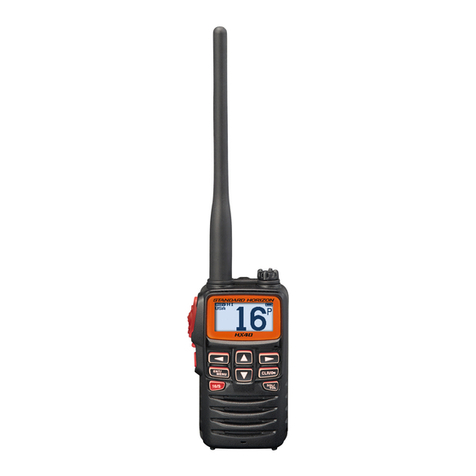
Standard Horizon
Standard Horizon HX40 Owner's manual and user's guide
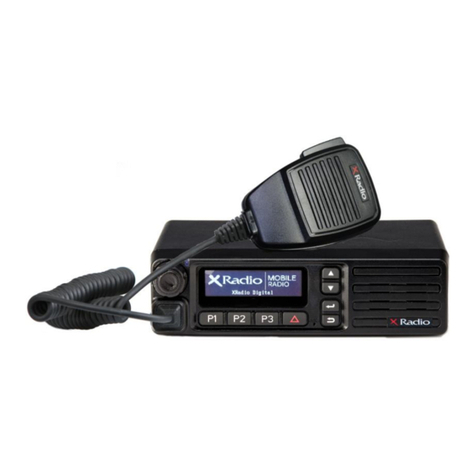
XRadio
XRadio DM-4000 Series user manual
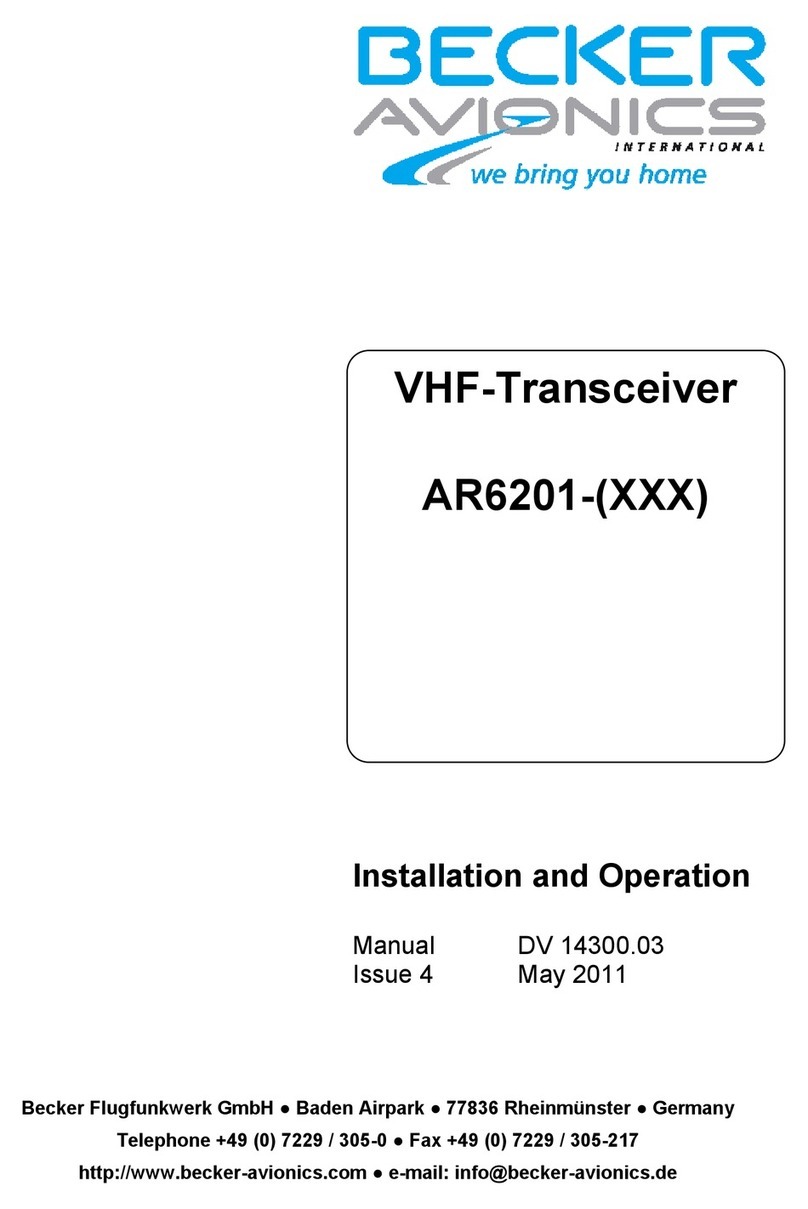
Becker
Becker AR6201 Series Installation and operation manual
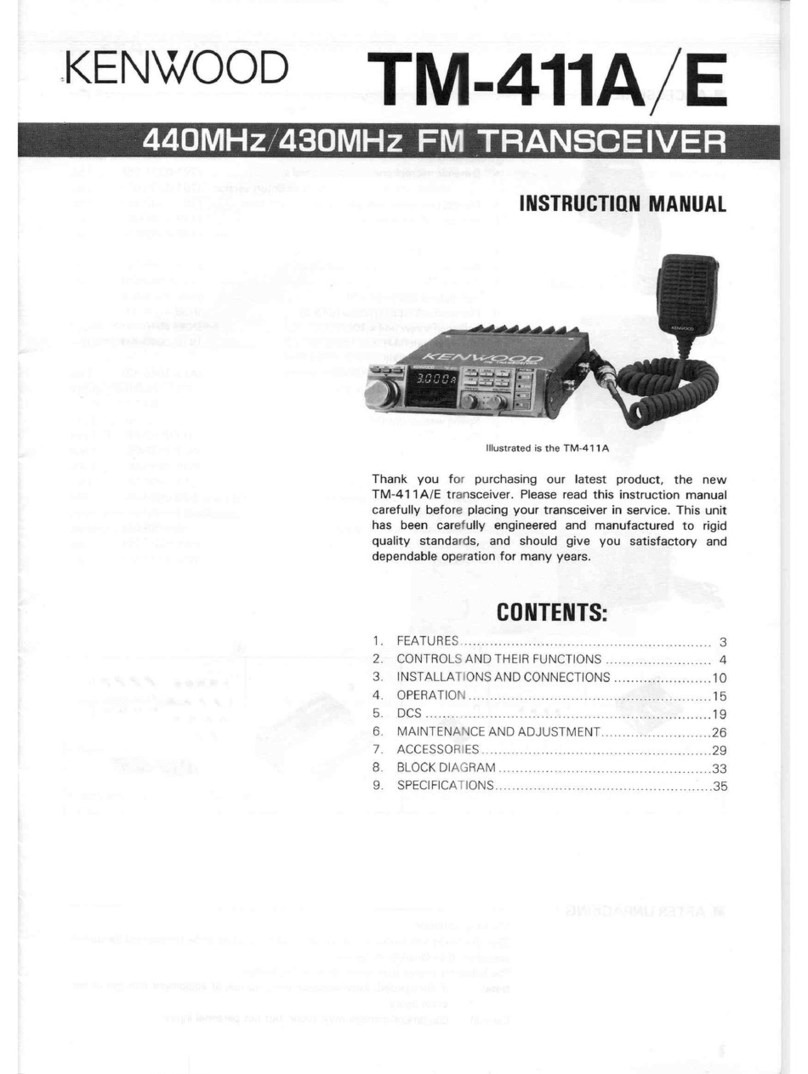
Kenwood
Kenwood TM-411A instruction manual
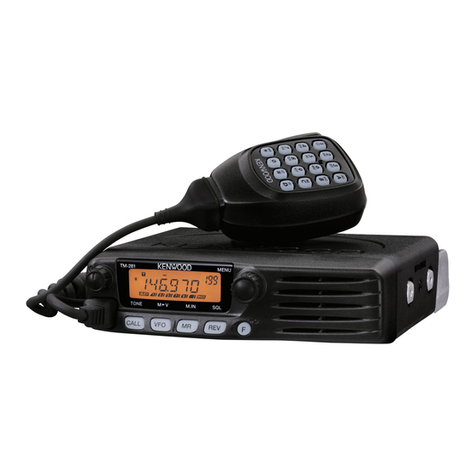
Kenwood
Kenwood TM-281E instruction manual
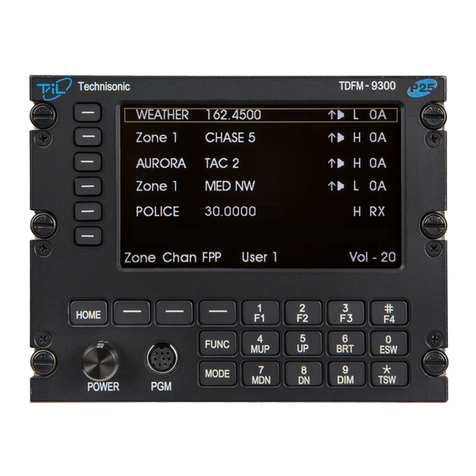
Technisonic Industries Limited
Technisonic Industries Limited TDFM-9300 operating instructions

LYNXTechnik
LYNXTechnik Yellobrik OTR 1440 quick reference

Intek
Intek MT-174W10 instruction manual

Kenwood
Kenwood TR-9000 instruction manual
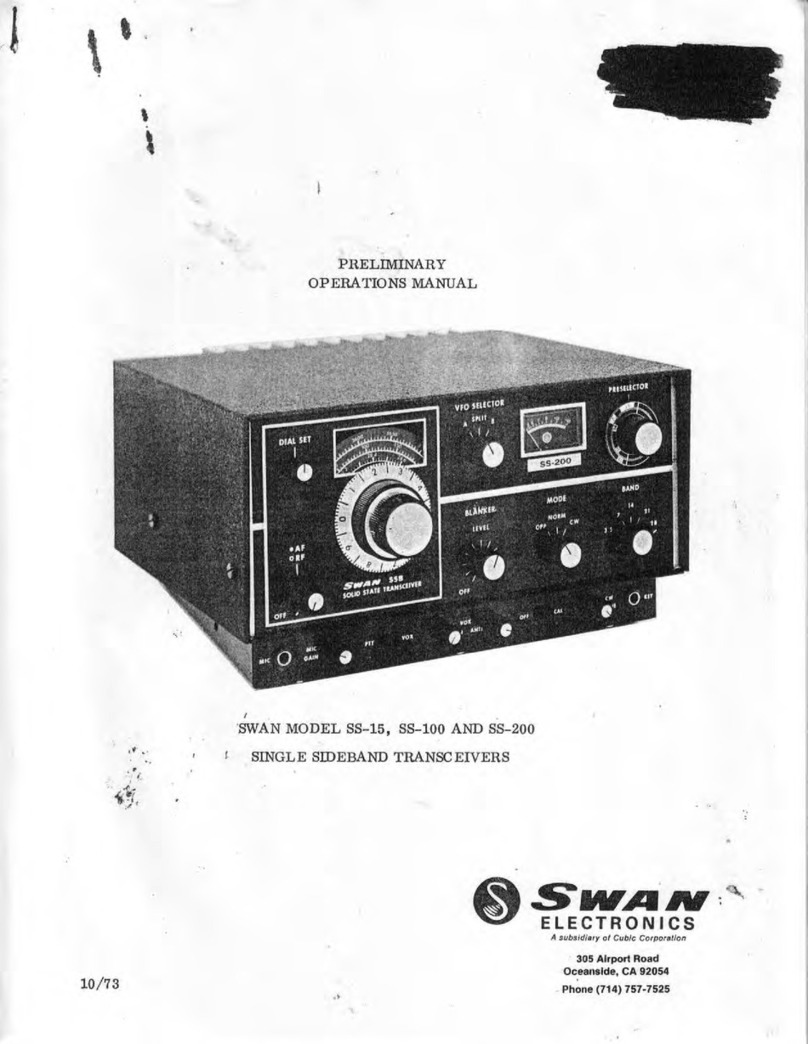
Cubic
Cubic SWAN SS-15 Operation manual
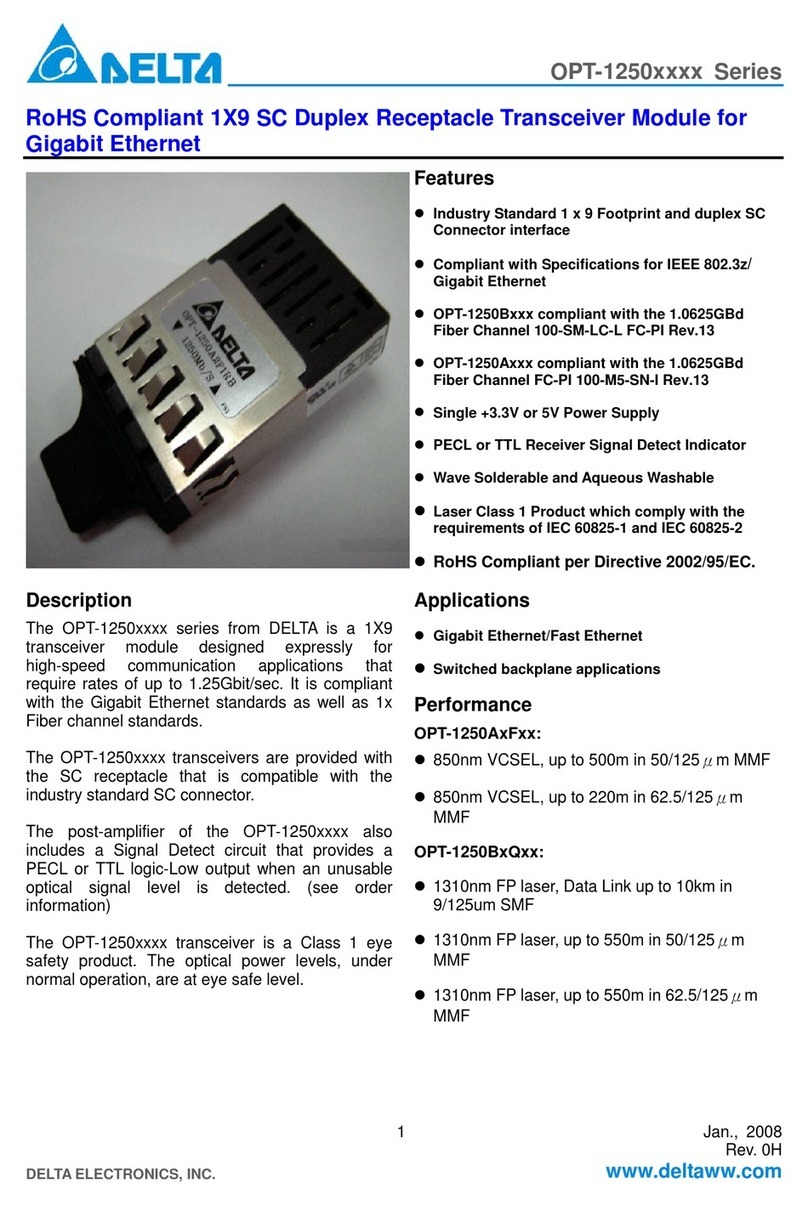
Delta Electronics
Delta Electronics OPT-1250xxxx Series Specification sheet
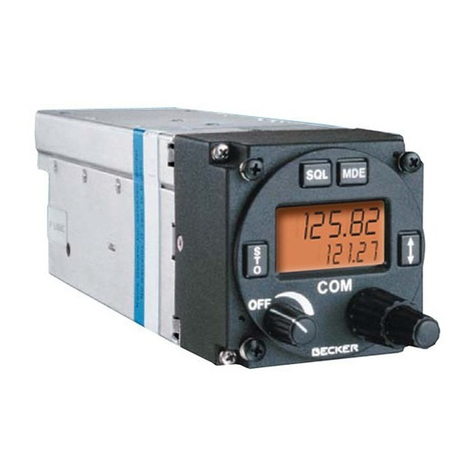
Becker
Becker AR 4201 Installation and operation guide

